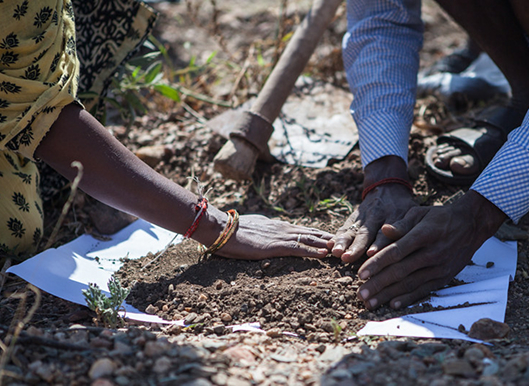Submitter: ICRISAT
Increasing incidences of drought and extreme weather events, driven by climate change, have significantly reduced the availability and reliability of natural resources such as water, fertile soil, and biodiversity. These changes pose a threat to the sustainability of agriculture, particularly in areas already facing resource constraints. In this context, decentralized rainwater harvesting, including in-situ and ex-situ conservation technologies, becomes a vital strategy to ensure sustainable crop intensification, increasing agricultural productivity without degrading the environment or depleting resources.

Existing and potential target regions, agroecologies, or farming systems. Include examples if available. This technology has the potential to be applied to a range of agro-climatic zones. This solution is effective in low, medium, and high rainfall zones. In low- and medium-rainfall zones, it will help improve soil moisture and groundwater availability. In contrast, in high-rainfall zones, it will help control flooding, soil erosion, and the safe disposal of excess runoff from upstream to downstream areas. In addition, it could also be helpful in springshed areas to restore the landscape.
A cluster of villages in Jhansi, Lalitpur, and other districts of the UP Bundelkhand region are live examples where this has been validated. More than 50,000 ha of seasonal fallow area have been brought into the double cropping system, resulting in increased productivity of 40 to 140%. In addition, some of the desolate villages, which were suffering from acute water shortages and land degradation, and more than 90% of the agricultural land was under permanent fallow, have been converted into a productive system by implementing a landscape resource conservation approach. It has also strengthened a range of ecosystem services.
Rainwater harvesting technologies can be scaled effectively because they use locally available materials, science-led engineering designs, and adaptable methods suited to diverse landscapes and farming systems. Their proven benefits in improving water availability and agricultural productivity make them attractive to farmers and communities. To support widespread adoption, it is essential to provide capacity-building through training and access to technical guidance.